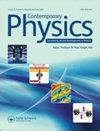Printed and flexible sensor technology
IF 3.3
4区 物理与天体物理
Q2 PHYSICS, MULTIDISCIPLINARY
引用次数: 1
Abstract
unique electronic properties which have a large surface area for energy storage and fast energy transfer. Furthermore, the use of a flexible supercapacitor microstructure is described in chapters 9–11 for fabrication using the printed technique. The printed material used is also described in detail as to what design is suitable so that the supercapacitor meets the requirements as a flexible material. The development of this flexible supercapacitor is highly anticipatedwith further research even though there is no standard measurement method to determine how flexible a material is. So next it is expected to improve the quality of materials or types of electrodes used for intelligent electronic devices in the future. With a detailed explanation of various designs, structures, electrodematerials, and applications of flexible supercapacitors, it will be a source of inspiration for readers. The preface of this book presents the latest survey on the development of flexible electronic materials, especially supercapacitor materials. So that the reader can know an overview before reading each available chapter. The interesting part of this book is that each chapter describes previous research that can support further research so that readers can learn about the strengths and weaknesses of each research that has been done. Researchers who are interested in developing it for the better will be able to get a clear picture of the nanoscale, curves, experimental pictures, and ideas for further research development. We are very impressed with this book because the material and application are presented in a clear, detailed, and accomplished way. How each author explains the materials and applications of flexible supercapacitors is very convenient to understand. Because the explanation is equipped with pictures of materials, technology utilisation, and stages of using materials that can help readers understand the results of the research that has been done. However, unfortunately, for general readers or non-expert readers, it will be difficult to understand images, especially SEM results, because basic knowledge is needed, especially in the fields of physics and chemistry. We highly recommend this book as the best source for graduate-level students at the advanced undergraduate level, researchers, industrial engineers, and specifically in fields related to physics, chemistry, natural science, and also researchers who have an interest in nanomaterial research, chemicalphysics, or similar. The authors have effectively presented this comprehensive book through their excellent explanations. We are assured that this book will get full consideration as their ultimate source among the intended readers for flexible supercapacitor applications. Nevertheless, someone who does not have basic knowledge of physics and chemistry may be quite complicated to understand this book.印刷和柔性传感器技术
独特的电子特性,具有较大的表面积,用于能量存储和快速的能量转移。此外,在第9-11章中描述了使用印刷技术制造柔性超级电容器的微观结构。所使用的印刷材料也详细描述了什么设计是合适的,以便超级电容器满足作为柔性材料的要求。尽管没有标准的测量方法来确定材料的柔性程度,但人们对这种柔性超级电容器的开发仍有很高的期望,需要进一步的研究。因此,未来有望提高用于智能电子设备的材料质量或电极类型。详细介绍了柔性超级电容器的各种设计、结构、电极材料和应用,将是读者的灵感来源。这本书的序言介绍了柔性电子材料,特别是超级电容器材料的最新发展概况。这样读者在阅读每一章之前就可以知道一个概述。这本书的有趣之处在于,每一章都描述了以前的研究,这些研究可以支持进一步的研究,这样读者就可以了解每一项研究的优点和缺点。有兴趣将其发展得更好的研究人员将能够获得纳米尺度的清晰图像、曲线、实验图片以及进一步研究发展的想法。这本书给我们留下了非常深刻的印象,因为它的材料和应用都是以一种清晰、详细和完成的方式呈现的。每个作者如何解释柔性超级电容器的材料和应用是非常方便理解的。因为在解释中配备了材料、技术利用和使用材料的阶段的图片,可以帮助读者理解已经完成的研究结果。然而,不幸的是,对于一般读者或非专业读者来说,很难理解图像,特别是SEM结果,因为需要基础知识,特别是在物理和化学领域。我们强烈推荐这本书作为最好的来源研究生水平的学生在高级本科水平,研究人员,工业工程师,特别是在相关领域的物理,化学,自然科学,以及研究人员谁有兴趣在纳米材料研究,化学物理,或类似。作者通过出色的解释有效地介绍了这本全面的书。我们确信,这本书将得到充分的考虑,作为他们的最终来源之间的预期读者灵活的超级电容器的应用。然而,对于没有基本物理和化学知识的人来说,理解这本书可能会很复杂。
本文章由计算机程序翻译,如有差异,请以英文原文为准。
求助全文
约1分钟内获得全文
求助全文
来源期刊

Contemporary Physics
物理-物理:综合
CiteScore
2.90
自引率
5.00%
发文量
18
审稿时长
>12 weeks
期刊介绍:
Contemporary Physics presents authoritative and lucid introductory review articles on important recent developments in physics. The articles are specially commissioned from experts in their field. The authors aim to review comprehensively the current state of their subject and place it within a broader context of contemporary research, industrial possibilities and applications in an accessible way.
The Journal is of particular use to undergraduates, teachers and lecturers and those starting postgraduate studies who wish to be introduced to a new area. Readers should be able to understand the review without reference to other material, although authors provide a full set of references so that those who wish to explore further can do so. The reviews can also be profitably read by all those who wish to keep abreast of the fields outside their own, or who need an accessible introduction to a new area.
Articles are written for a wide range of readers, whether they be physicists, physical scientists or engineers employed in higher education, teaching, industry or government.
Contemporary Physics also contains a major section devoted to standard book reviews and essay reviews which review books in the context of the general aspects of a field.
 求助内容:
求助内容: 应助结果提醒方式:
应助结果提醒方式:


